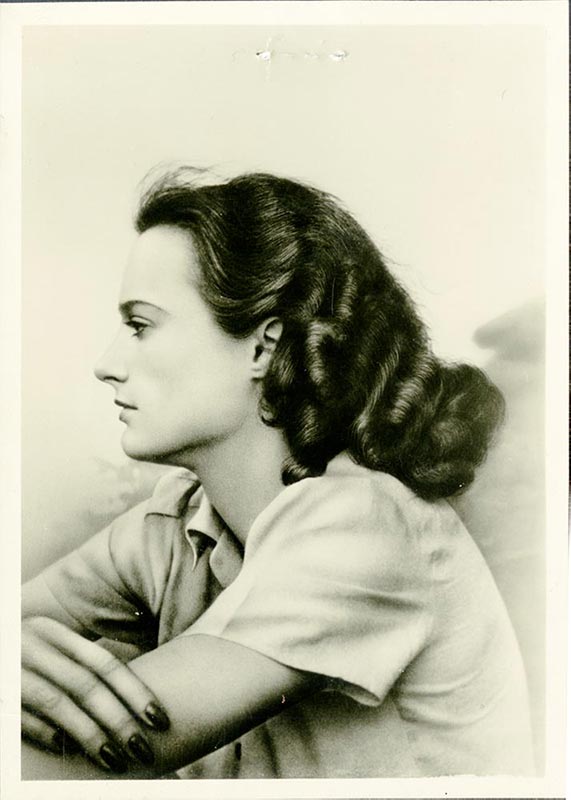25. Virginia Dudley
| Life Dates | 1913-1981 |
| Place of Birth | Spring City, TN, USA |
| Place of Death | Rising Fawn, GA, USA |
| Birth Name | Virginia Dudley |
Virginia Dudley was the second of three children born in rural Spring City, Tennessee, to Laura and Charles Dudley.1 The family eventually settled in Chattanooga, where her earliest exposure to art came at Chattanooga Central High School with teacher Margaret Hayes. Because of her father’s unexpected death in 1929, Dudley had to set aside aspirations to become a doctor and work instead as a photo restorer and airbrush artist at Success Portrait Company in Chattanooga. After six years of supporting her family, she earned a scholarship to attend the University of Chattanooga between 1937 and 1940 and had some of her first solo exhibitions locally during this period. Frank Braisden, her undergraduate art professor and mentor, nominated Dudley for a nationwide competition for a one-year scholarship to the Art Students League, which she won for a watercolor entitled Hilltop House. At the League during the 1940 to 1941 academic year, she took a variety of classes in sculpture (William Zorach), painting (Vaclav Vytlacil), and printmaking (Harry Sternberg).2 Dudley ended up staying in New York for two years beyond her scholarship, exploring classes at the Craft Students League and at the New School for Social Research, where she was a class monitor for Bernice Abbott. Dudley’s print Tenement Children was included in the Artists for Victory exhibition of 1942. In 1943, she won a fellowship from the Julius Rosenwald Fund to photograph, paint, and sketch social and economic conditions in the south for African Americans and poor whites.3 Upon her return to New York in 1945, Dudley finally found her way to Atelier 17, though none of her intaglio prints have survived. While in New York, Dudley met Joseph Spencer Moran, a poet whom she married in 1946. After brief travels to New Mexico for Moran’s teaching job and California for her master’s degree at Scripps College, they moved in 1950 to a one-room cabin on the top of Lookout Mountain in Georgia, which she had built with her first husband Oscar McElhaney who died in 1944. Living a largely bohemian lifestyle (no electricity or running water, no car), they established Hidden Faun Enamels, which produced modernist enamel plates and jewelry.4 The endeavor lasted for about seven years, at which point she and Moran divorced, and she then took positions with the United States military as director of arts and crafts at various domestic bases and in Korea. Later in life, Dudley produced many welded steel sculptures.
Archives
Julius Rosenwald Fund Archives at the Franklin Library, Fisk University
Hamilton, Frank. “Virginia Evelyn Dudley: Her Life as Told Through the Press.” Accessed March 1, 2011.
Selected Bibliography
Moran, J. Spenser. “Rising Faun Enamels.” Craft Horizons 14, no. 1 (February 1954): 26–31.
Thomas, Joe. Virginia Dudley and American Modernism. Kennesaw, GA: Zuckerman Museum of Art, 2014.
Notes
- Dudley’s application for the Rosenwald Fellowship includes many biographical details: Julius Rosenwald Fund Archives at the Franklin Library, Fisk University (Box 409, folder 6). See also Joe Thomas, Virginia Dudley and American Modernism (Kennesaw, GA: Zuckerman Museum of Art, 2014); Frank Hamilton, “Virginia Evelyn Dudley: Her Life as Told Through the Press,” accessed March 1, 2011. The artist’s niece, Patricia Collier, also provided helpful information about her aunt. ↩
- Student registration card, Art Students League of New York. ↩
- Julius Rosenwald Fund Archives at the Franklin Library, Fisk University (Box 409, folder 6). ↩
- J. Spenser Moran, “Rising Faun Enamels,” Craft Horizons 14, no. 1 (February 1954): 26–31. ↩

